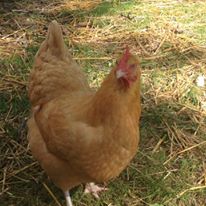 When it comes to chicken keeping injuries and illnesses are par for the course. Keeping a chicken first aid kit is extremely important, knowing what supplies you need even more so. I like to have a separate small tackle box or tool chest for each type of animal. What’s in my chicken kit? Let’s go over what all I have in mine and the uses for the items. The brand of products I use are simply what I personally choose, I have no endorsements or affiliate ties to any of them.
When it comes to chicken keeping injuries and illnesses are par for the course. Keeping a chicken first aid kit is extremely important, knowing what supplies you need even more so. I like to have a separate small tackle box or tool chest for each type of animal. What’s in my chicken kit? Let’s go over what all I have in mine and the uses for the items. The brand of products I use are simply what I personally choose, I have no endorsements or affiliate ties to any of them.
INJURY
- Peroxide with a sprayer top: works great to clean large open wounds.
- Triple Antibiotic: to apply on open sores or wounds.
- Bag Balm: to apply on wounds and scaly leg mites.
- Flex Bandage/Coban: in different widths 2in, 4in, and 6in. Because it is self-adhesive, it works great to cover wounds or to even wrap broken legs in. I have used for both instances I have used both animal versions and the human version both work well.
- Gauze Pads: to pack and clean open wounds.
- Corn Starch: used to stop profusely bleeding wounds.
- Preparation H: works well in helping a prolapsed vent.
- Disposable Gloves: you need to protect yourself as well.
- Scissors: always important to have around for cutting bandages and such.


ILLNESS
- Electrolytes: whether you are getting new chickens, a hot summer day, or an ill chicken it’s always a good idea to have them on hand. I prefer to buy single dose packages or single-dose pills. One packet or pill to each gallon of water.
- Probiotics: also available in single-dose packets I always have them available. At the first signs of stress or illness, I add them to the water for a day or two.
- Apple Cider Vinegar: I add to my chickens’ water once a week during the summer and if an illness is present in my flock. Just 1 Tbsp per gallon is all you need.
- Ivermectin pour-on: I use this for a few different reasons it works great for intestinal parasites as well as external. Though it has not been tested in chickens it has been used by many chicken keepers for years. The dose I have been told is large rooster 5 drops, large hens 4 drops, medium chickens 3 drops, bantams 1-2 drops, and never use on chicks. I use a small eyedropper to administer the correct dose to the skin between the shoulder blades. As far as egg withdraw, I’m not 100% sure because there is no research; I would say no less than 30 days. I only use it on older hens who no longer lay and my roosters.
- Syringe: to administer medication or to use as a wound flush.




Other Choice Items
- Antibiotics: some choose to keep water-soluble antibiotics on hand. I, however, prefer not to use antibiotics, therefore, I don’t keep them in stock. A 30-day minimum egg withdraw will be needed.
- Vicks Rub: place a small amount under the wings if you have a chicken with a bad cold or respiratory issue.
- Wound Spray with antifungal: works great to fight off bacteria-ridden wounds as well as fighting off ringworm.

Most of all make sure you have a secluded quiet crate or hospital bay for your ill or injured chicken to stay in. They may need extra heat or a cooling fan available depending on the situation. Clean bedding and fresh food and water at all times. It is better to be over-prepared and not need it then underprepared and need it. So, fill your first aid kit with everything you think you may need.
Follow Carrie on her website, Miller Micro Farm, and on Facebook.













1 Comment
I use a new plastic condiment bottle for flushing wounds. It holds more water than a syringe & it’s easy to just squeeze the bottle & aim than try to push down a plunger while wrestling a chicken.